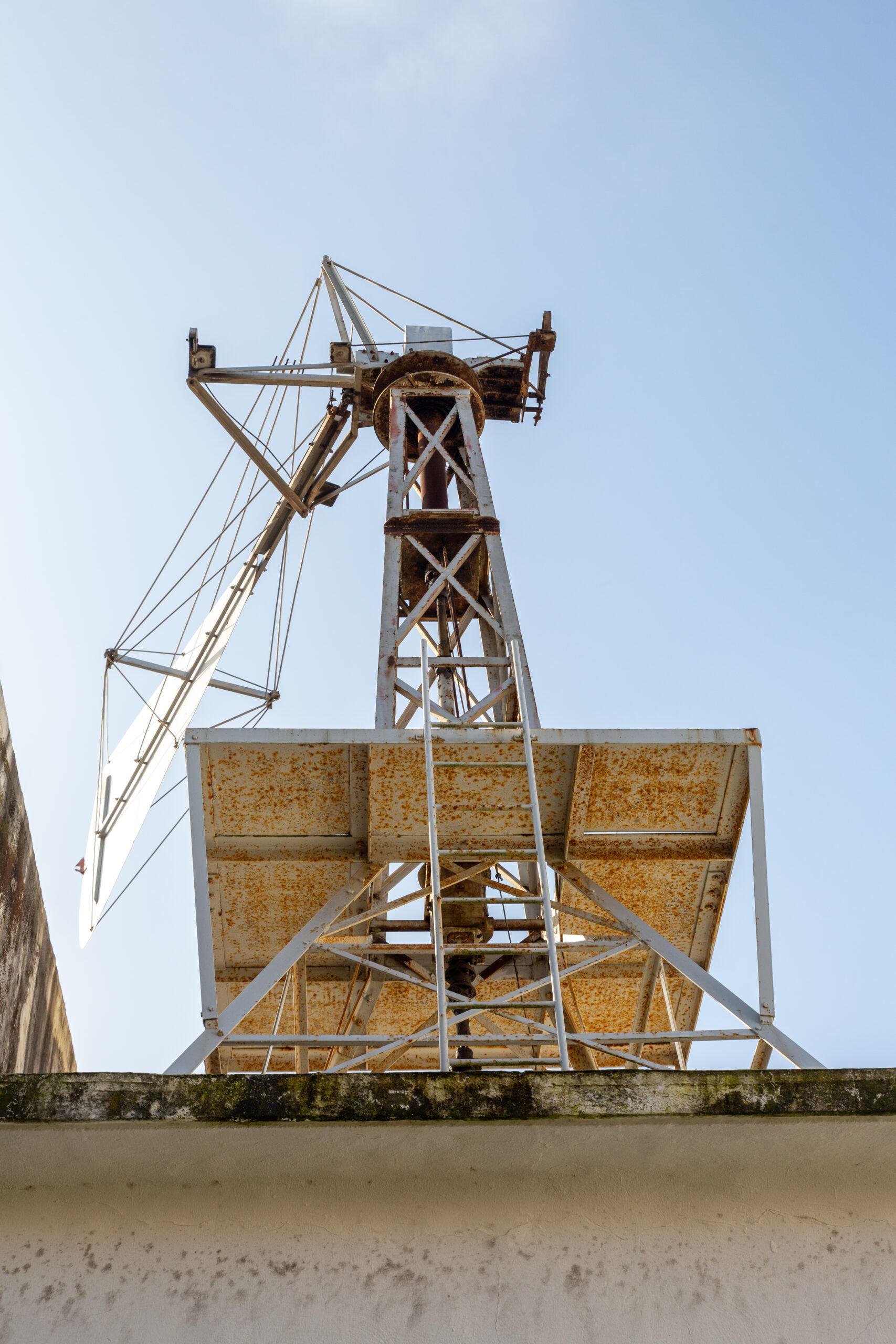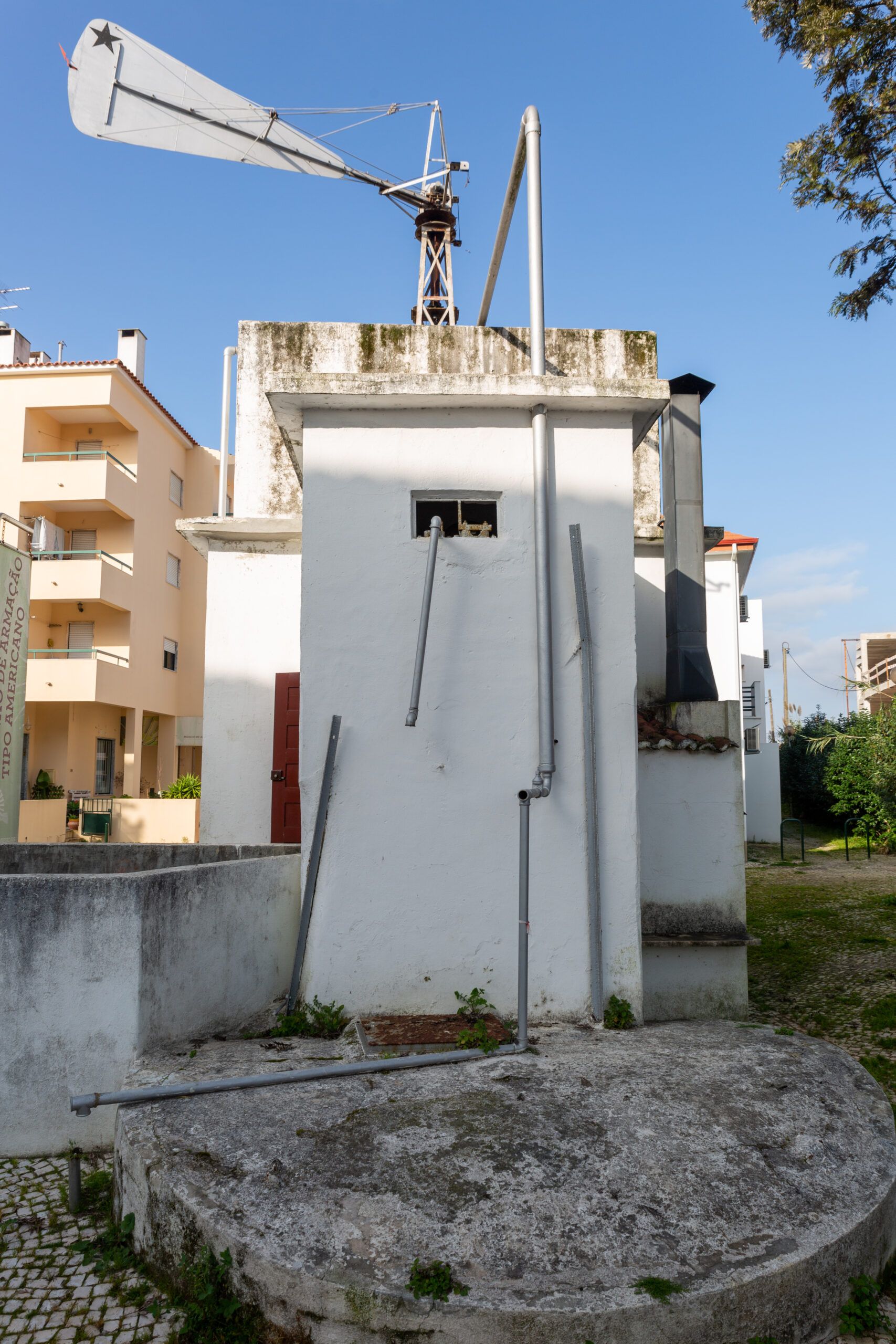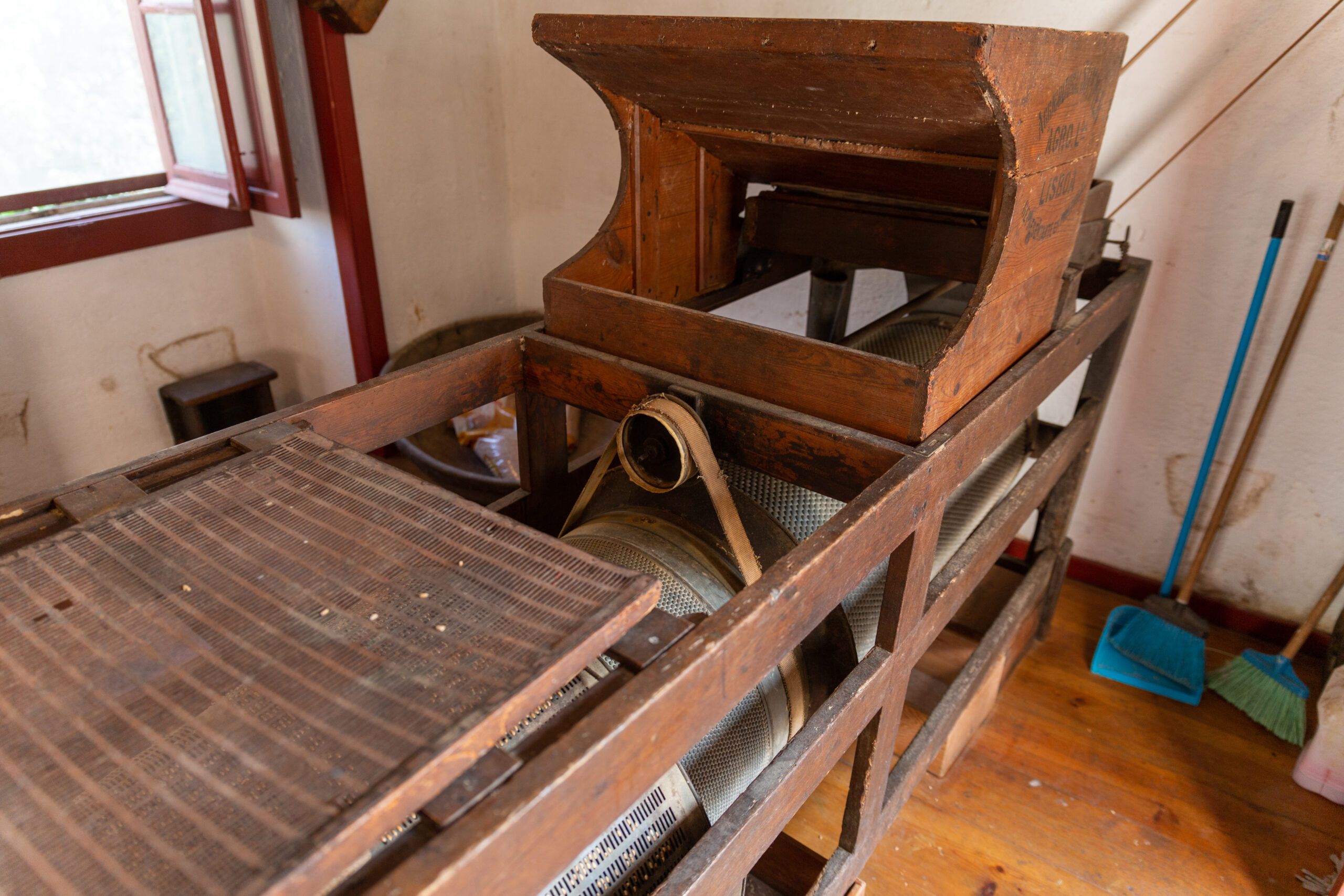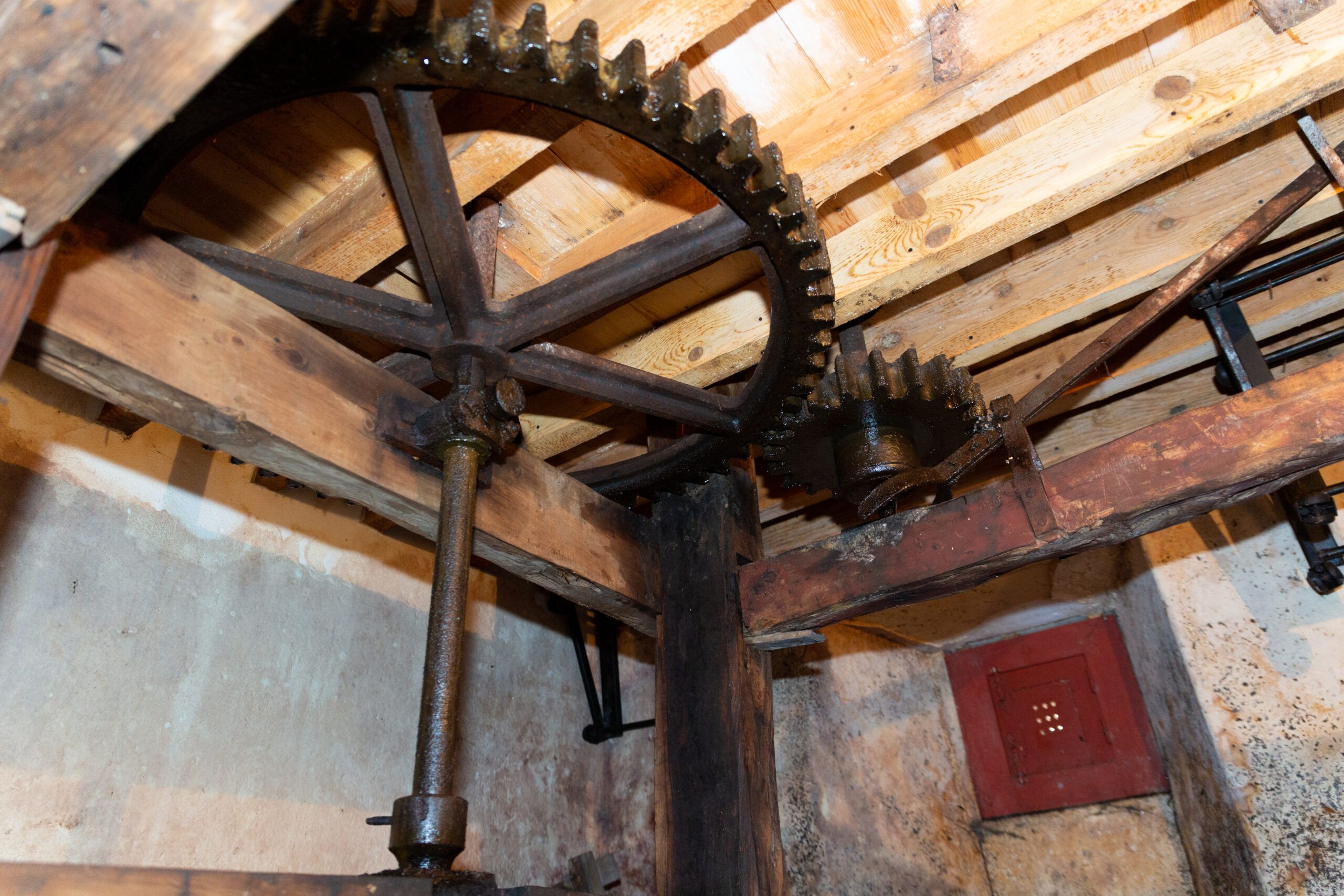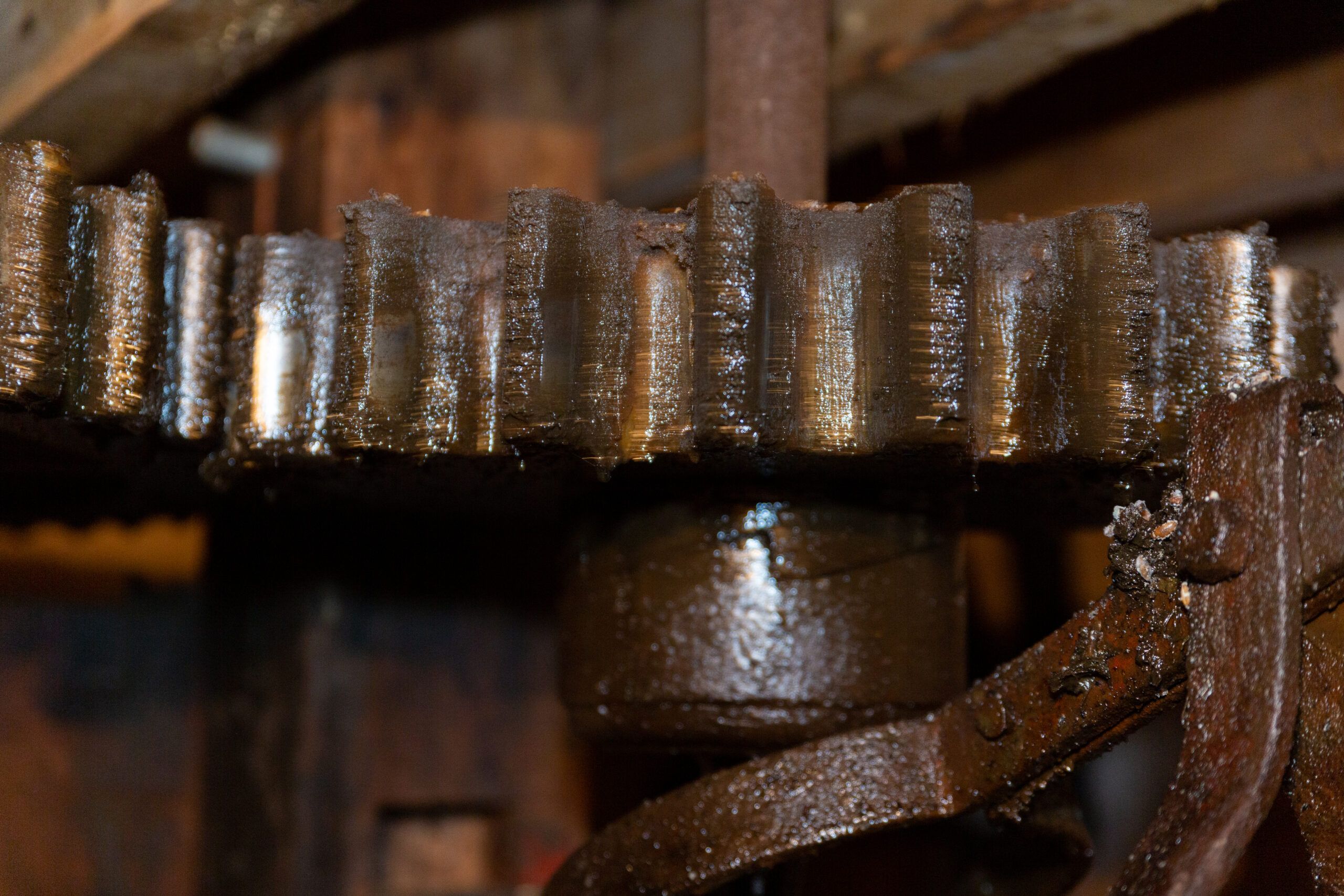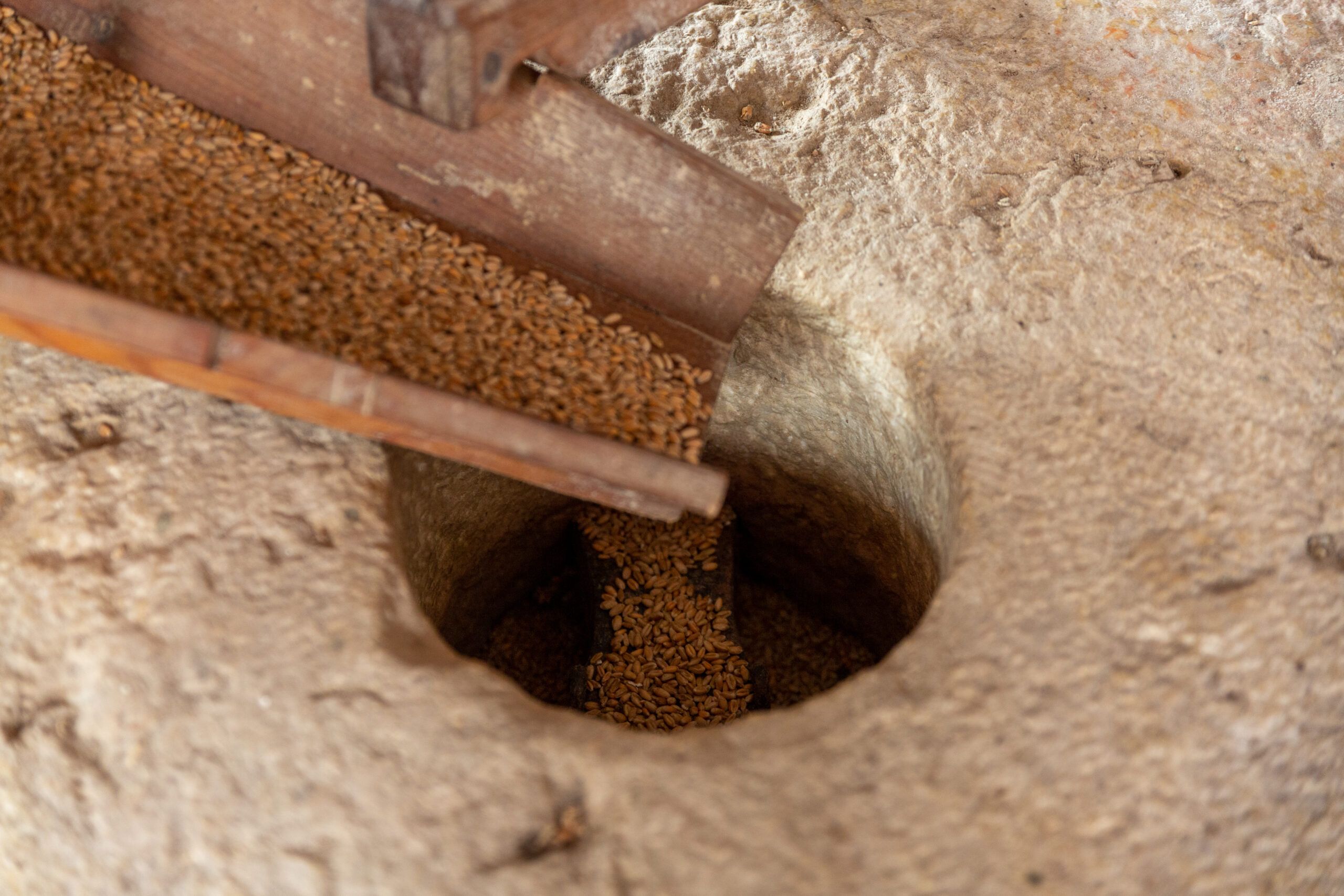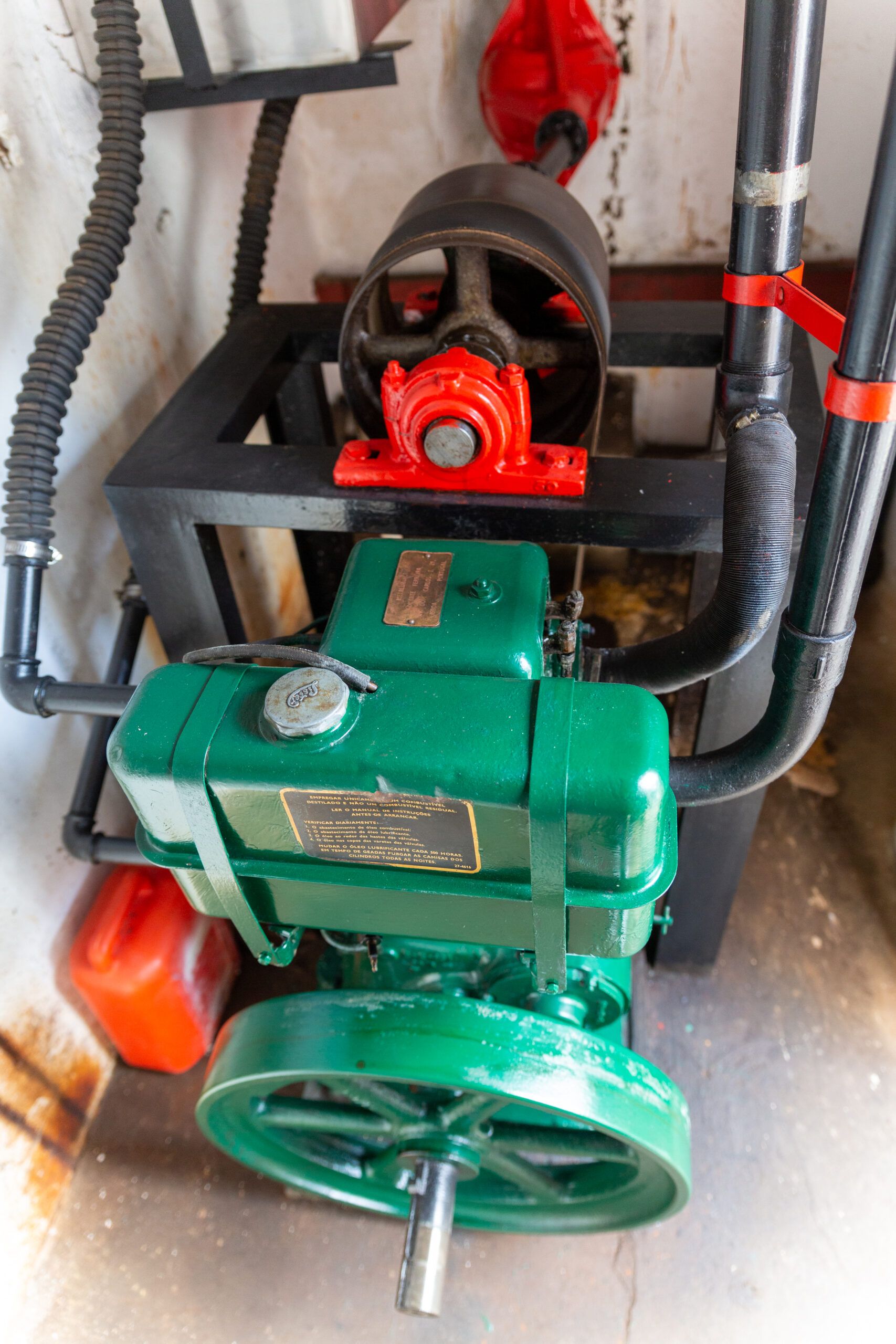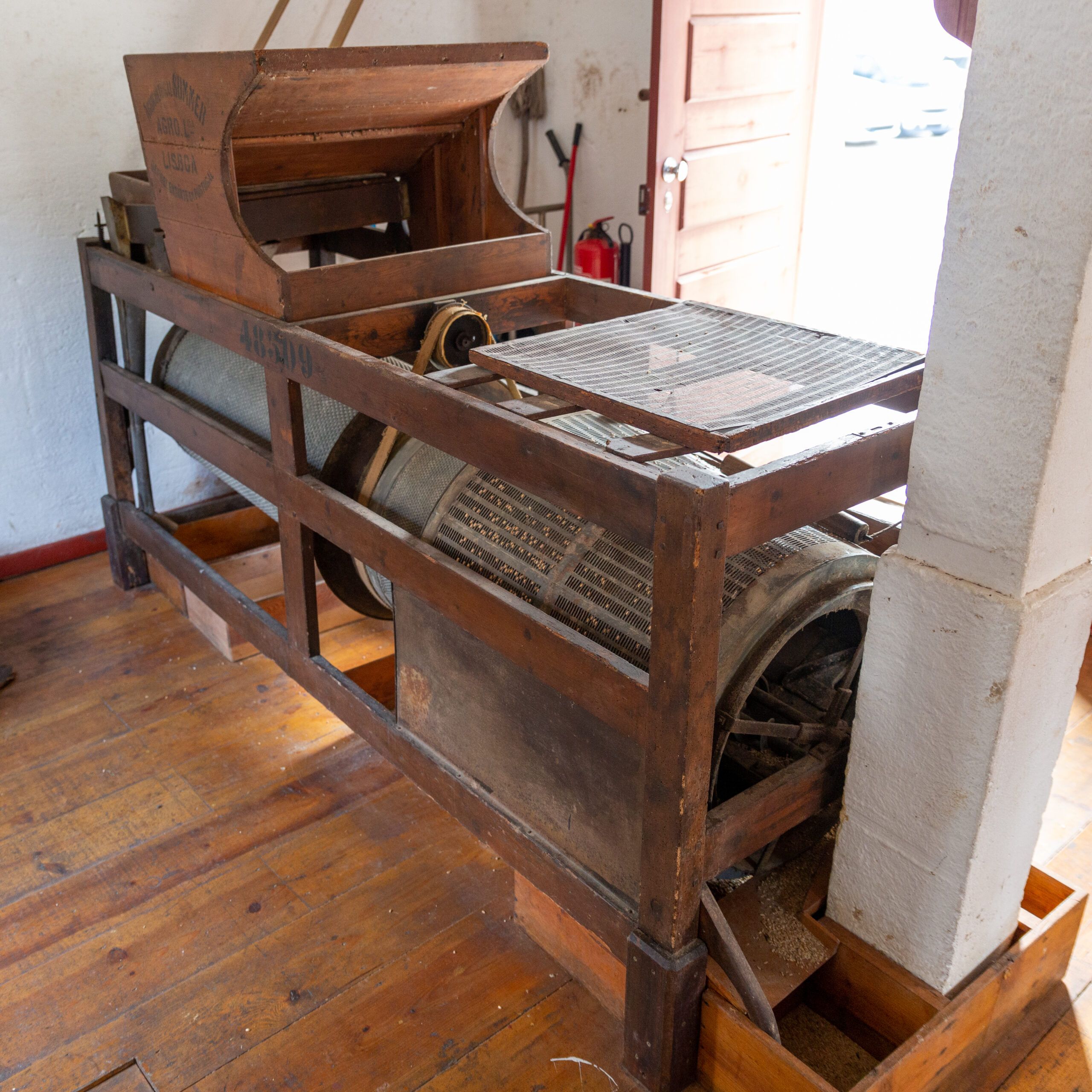Moinho de Armação Tipo Americano de Alcabideche
Categories/Tags: Utilization of water and wind power.
Historical context: References to windmills in Cascais, specifically Alcabideche, can be found as early as the XI century in the verses of the Arab poet Ibn Muqâna. With population growth and urbanization, there was an increased demand for flour, a vital ingredient in bread making. This led to the emergence of various milling typologies, including the American-type mill in the second half of the XIX century. Known for its efficiency and ease of installation, it spread successfully, reaching Portugal in the early XX century.
The designation “American” stems from the metal framework resembling a residential house, a concept originating from the United States. In Cascais, the Roquete family, renowned for their construction of windmills nationwide, embraced this idea and adapted it to local needs, introducing sheet metal sails to maximize wind energy utilization.
These mills continued operations in Cascais longer than those in the surrounding Lisbon region, benefiting from a local market and distance from industrial milling facilities, except for a factory in Carcavelos. However, the expansion and modernization of the Carcavelos Mill in 1953 marked the decline of traditional milling structures in the periphery.
Form – main architectural features: Constructed in the early XX century, the Moinho de Armação tipo Americano in Alcabideche capitalized on the atmospheric conditions of the region. It boasts a rectangular two-story layout with stone masonry walls and a white-washed finish. The metal framework atop the mill, rising to seven meters in height with three-meter sheet metal wings, houses water tanks originally used for irrigation.
Inside, the ground floor comprises two chambers, one for milling operations with two grinding stones and a cereal sorting machine, and another housing a unique diesel engine from the 1950s. The lower level, known as the “inferno” – meaning Hell – houses the internal gearing system connecting the main shaft to the grinding stones. Adjacent to this space is a small storage area accessed via a trapdoor near the cereal sorting machine.
Function: Primarily utilized for milling grains, the Moinho de Armação tipo Americano in Alcabideche played a crucial role in the local economy and sustenance, processing wheat, corn, rye, and barley. The introduction of a diesel engine in the mid-XX century aimed to enhance competitiveness with industrial milling.
Lessons for sustainability: The meticulous restoration and preservation efforts undertaken by the municipality of Cascais highlight the importance of safeguarding industrial heritage. Transforming the mill into an educational facility and interpretation center not only preserves historical memory, but also promotes sustainable practices by raising awareness about traditional milling techniques and their relevance to modern-day sustainability efforts.
Cultural heritage and tourism: The Moinho de Armação tipo Americano serves as a cultural landmark, attracting tourists and locals interested in exploring the region’s industrial past. With its authentic architectural features and educational workshops on breadmaking, the mill provides visitors with a unique opportunity to delve into the rich history of milling in Cascais.
Location: Alcabideche – Portugal

Moinho de Armação Tipo Americano – Portugal
Sources
Bairro dos Museus. (n.d.). Moinho de Armação Tipo Americano de Alcabideche. Retrieved February 15th, 2024, from https://bairrodosmuseus.cascais.pt/list/museu/moinho-de-armacao-tipo-americano-de-alcabideche
Cultura Cascais. (n.d.). Moinho de Armação Tipo Americano. Retrieved February 15th, 2024, from https://cultura.cascais.pt/list/patrimonio/moinho-de-armacao-tipo-americano
Sistema de Informação para o Património Arquitetónico. (2011). Moinho de Armação / Moinho de tipo americano. Retrieved February 15th, 2024, from http://www.monumentos.gov.pt/Site/APP_PagesUser/SIPA.aspx?id=35900


